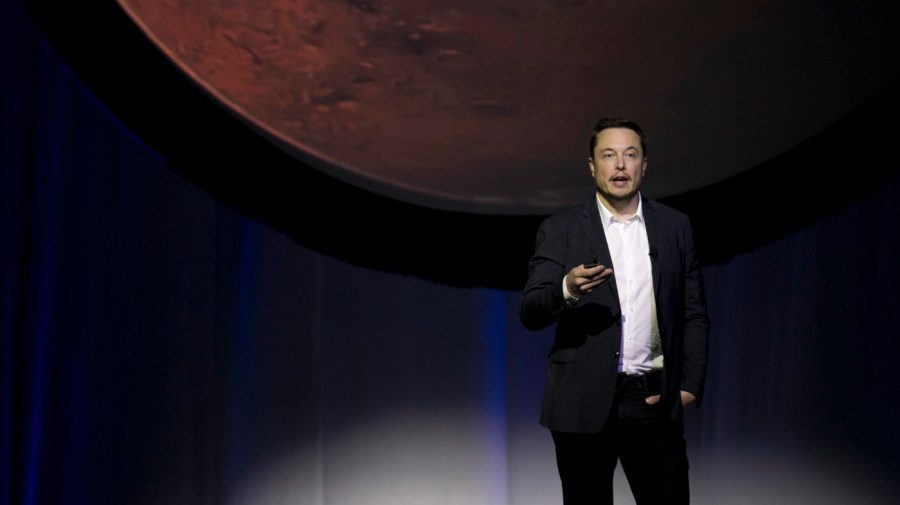Politics
Trump and Musk’s Ambitious Mars Plans

In September 1962, John F. Kennedy famously urged Americans with his iconic words, “We choose to go to the Moon.” Recently, former President Donald Trump reignited that spirit, telling Elon Musk to get those rocket ships ready because Mars awaits.
Trump has often positioned manned missions to Mars as a goal, and we see this renewed challenge as a natural extension of the impactful space initiatives he spearheaded during his first term, building on the ambitious return to the Moon under the Artemis program.
However, many skeptics wonder if sending spacecraft with crew to Mars is feasible by January 20, 2029. The consensus in the scientific community leans towards a resounding “Yes.”
For an effective Mars mission during a potential second Trump administration, optimal launch windows will arise in 2026 and 2028. The primary barriers remaining are technical and political in nature.
Betting against Elon Musk is not wise. The Tesla electric vehicles stand strong alongside luxury brands like Porsche and Ferrari, with the Tesla Model Y emerging as the world’s top-selling car.
When SpaceX launched its first Falcon 9 rocket in 2010, the U.S. owned nearly none of the global commercial launch market. Fast forward to today, and SpaceX now carries out more launches than all other countries combined back then.
In 2010, there were approximately 1,000 satellites orbiting Earth. Today, Musk’s Starlink fleet alone operates over six times that figure, surpassing all commercial, military, and governmental satellites combined.
Trump’s footprint in space policy is unprecedented. No president has made a more significant mark on U.S. space strategy. He revived the National Space Council, established the Space Force, and set NASA on a path back to the Moon through Artemis.
Under Trump’s leadership, NASA, along with the Department of State, forged the Artemis Accords, uniting numerous nations under American objectives for space resource development. His administration enacted a wide array of executive orders and policy measures focused on aspects ranging from space cybersecurity to the management of orbital debris.
Currently, Musk is frequently testing the massive Starship rocket in Texas, subject to the limits set by the Federal Aviation Administration. Musk recently announced plans to send uncrewed Starships to Mars in 2026, with hopes of following up with manned missions two years later, provided conditions are favorable.
We believe that by 2029, Starships could indeed be on Mars if regulatory conditions allow Musk’s ambitions to proceed unimpeded. The spacecraft have shown promising capabilities, with landing on Mars potentially easier than the previous moon missions it was contracted for by NASA.
Mars boasts an atmosphere that can facilitate aerobraking and fuel production, minimizing the need for pre-fueled missions from Earth. However, the greatest challenge will be the production of fuel and oxidizers on Mars for the astronauts’ return journey, which might delay their return until 2030.
Nonetheless, no need for alarm—Starship is programmed to deliver ample supplies to ensure crews can thrive and safeguard against Mars’ harsh climate and radiation for extended periods. With the right vision, sending astronauts there could unlock incredible scientific opportunities.
To make this a reality, the next Trump administration should move promptly to streamline the complicated permit and licensing process for launches. Musk has expressed frustration over the numerous permits, which hinder efforts in a competitive global landscape.
While NASA contemplates Mars missions, China is poised to leap ahead. It’s critical to shed bureaucratic obstacles in space exploration and adopt an America-first approach that supports business innovation.
Exploration of Mars doesn’t negate the importance of lunar development, especially given the current geopolitical climate involving Russia and China. These tasks can proceed in tandem, with strategic interests encouraging us to secure our position against growing authoritarianism.
Harvesting lunar resources offers significant advantages for Earth and serves as a stepping stone towards settling Mars. Addressing challenges like resource processing, food growth, radiation safety, and adaptation to reduced gravity will be crucial for both celestial endeavors.
The Moon offers immediate proximity, making it the ideal testing ground before we advance to Mars. A commercially directed Starship program, supported by NASA for scientific purposes, can make the realization of these plans both practical and financially viable.
History shows that America thrives when faced with significant challenges. When united in purpose, we have consistently found visionary leaders to guide us. With Trump and Musk poised for action, the question remains: Are we ready to follow?
Greg Autry, who served as the White House liaison to NASA during Trump’s administration, co-authored “Red Moon Rising: How America Will Beat China on the Final Frontier.” Brett Mecum holds a position on the Arizona Space Commission.
